From streetside stalls dishing out NT$30 (US$1) bowls of braised pork rice to upscale eateries tucked away in quiet alleyways, Michelin inspectors are scouring Taipei selecting restaurants for its first-ever guide.
Taiwan’s reputation among in-the-know travelers as a foodie paradise will be further burnished when Taipei becomes the latest Asian city to have its own Michelin guide in the first quarter of next year.
Best-known for its night markets and fresh local ingredients, Michelin says the city’s street food could make the grade alongside higher-end restaurants, as it has in the Hong Kong and Singapore editions.
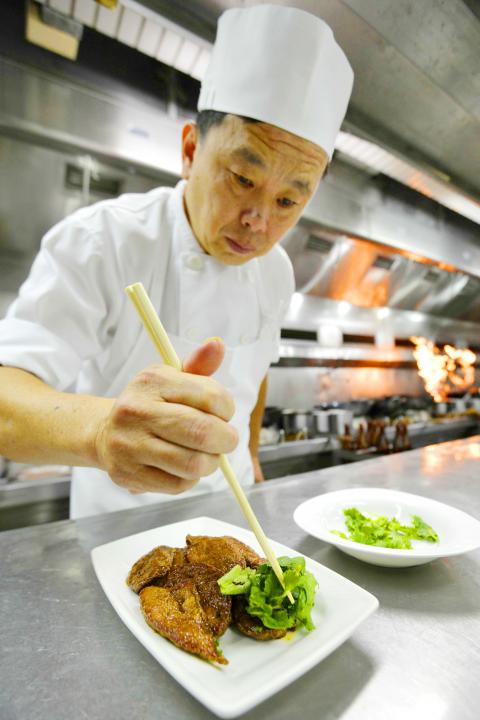
Photo: Sam Yeh, AFP
“You don’t need to be in a wonderful place to have extreme quality of ingredients and to have a real personalities of the chef,” Michelin spokesman Bruno de Feraudy said. “Exceptional for us is what’s happening on the plate and purely on the plate.”
Traditionally seen as a posh gourmet compass, budget eats are increasingly recognized by Michelin and have used the prestigious award to build big businesses.
Hong Kong’s Tim Ho Wan went from hole-in-the-wall to successful chain while a Singapore hawker awarded a Michelin star last year has grown his soy sauce chicken stall into a franchise.
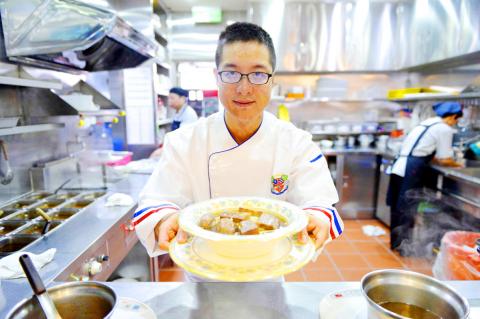
Photo: Sam Yeh, AFP
Taiwanese foodies are speculating that Jinfeng — a corner joint serving NT$30 bowls of rice topped with braised minced fatty pork (lu rou fan, 滷肉飯) — could make the cut.
However, shop manager Wu Su-yan (吳素顏) said she is indifferent and the long queues of tourists and locals speak for themselves.
“Having customers is confirmation enough. We don’t need it to be written on a piece of paper to know our lu rou fan is good,” she said.
Shin Yeh’s five branches in Taipei are packed most nights of the week and the 40-year-old institution hopes Michelin will spotlight the types of traditional dishes it serves, which have fallen out of favor with some young Taiwanese.
Favorites such as pan-fried pork liver cost NT$280 while dark orange slices of roasted mullet roe go for NT$680 a portion, putting its prices well above street snacks, but far below the highest end restaurants.
A thick golden omelet studded with preserved turnip is so popular that Shin Yeh’s kitchens have spots reserved just for making the dish, brand director Cybie Fang (方苓) said, with new chefs taking three months to master the recipe.
Fang said the guide might help rebrand Taiwanese cuisine for young domestic consumers, some of whom see Shin Yeh’s menu as “too passe.”
“No matter how many restaurants get stars, I think it is a big plus for Taiwan,” she said.
However, others worry about the burden the stars could bring.
“I will be quite ecstatic for a moment, but there will be enormous pressure for me,” said Tony Wang (王聰源), whose restaurant Niu Ba Ba, or “Beef Father,” serves up bowls of Taiwanese staple beef noodles for an eye-watering NT$10,000.
It also offers cheaper noodles starting from NT$500, but still manages to sell three of the expensive bowls daily on average.
Wang said the price reflects the quality of the ingredients — he said he spent NT$60 million and years researching different kinds of beef. His recipe uses four types of premium meat, broth made from four kinds of tomatoes and noodles that cost six times the average, because they are kneaded from Japanese flour.
The Michelin guides, first published in France more than a century ago to promote automobile travel, made their first foray into Asia with a Tokyo edition in 2007.
Taiwanese chef Andre Chiang (江振誠) was awarded two Michelin stars for his Singapore restaurant Andre.
However, he announced he would close it in February next year to focus on his high-end Taipei restaurant RAW, which serves up intricate artistic versions of Taiwanese classics and has a months-long waiting list for a table. A set dinner there costs NT$1,850.
However, Chiang said he does not want RAW listed in the Michelin guide, characterizing it instead as a training ground for young chefs.
Several French restaurateurs have relinquished the distinction due to the high pressure of maintaining exacting standards, but de Feraudy said the guide will not exclude a restaurant at a chef’s request.
“If there is something exceptional [consumers] could enjoy, we should tell them,” he said.
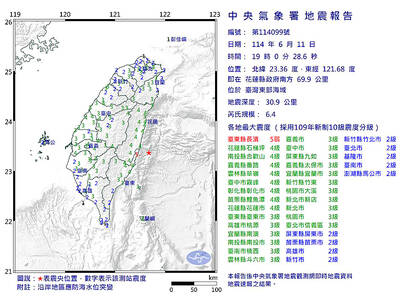
A magnitude 6.4 earthquake struck off the coast of Hualien County in eastern Taiwan at 7pm yesterday, the Central Weather Administration (CWA) said. The epicenter of the temblor was at sea, about 69.9km south of Hualien County Hall, at a depth of 30.9km, it said. There were no immediate reports of damage resulting from the quake. The earthquake’s intensity, which gauges the actual effect of a temblor, was highest in Taitung County’s Changbin Township (長濱), where it measured 5 on Taiwan’s seven-tier intensity scale. The quake also measured an intensity of 4 in Hualien, Nantou, Chiayi, Yunlin, Changhua and Miaoli counties, as well as
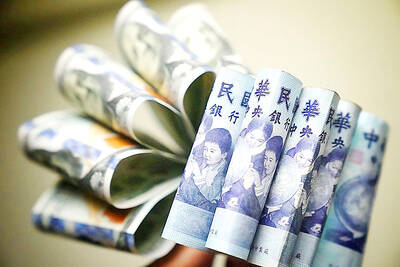
Credit departments of farmers’ and fishers’ associations blocked a total of more than NT$180 million (US$6.01 million) from being lost to scams last year, National Police Agency (NPA) data showed. The Agricultural Finance Agency (AFA) said last week that staff of farmers’ and fishers’ associations’ credit departments are required to implement fraud prevention measures when they serve clients at the counter. They would ask clients about personal financial management activities whenever they suspect there might be a fraud situation, and would immediately report the incident to local authorities, which would send police officers to the site to help, it said. NPA data showed
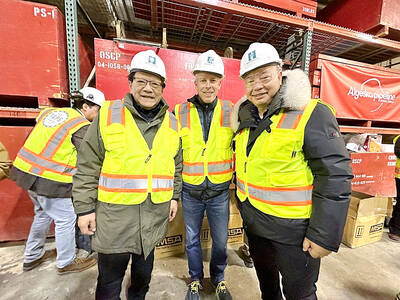
ENERGY RESILIENCE: Although Alaska is open for investments, Taiwan is sourcing its gas from the Middle East, and the sea routes carry risks, Ho Cheng-hui said US government officials’ high-profile reception of a Taiwanese representative at the Alaska Sustainable Energy Conference indicated the emergence of an Indo-Pacific energy resilience alliance, an academic said. Presidential Office Secretary-General Pan Men-an (潘孟安) attended the conference in Alaska on Thursday last week at the invitation of the US government. Pan visited oil and gas facilities with senior US officials, including US Secretary of the Interior Doug Burgum, US Secretary of Energy Chris Wright, Alaska Governor Mike Dunleavy and US Senator Daniel Sullivan. Pan attending the conference on behalf of President William Lai (賴清德) shows a significant elevation in diplomatic representation,
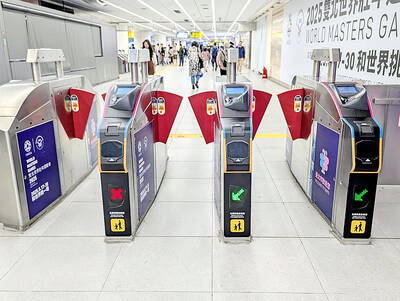
The Taipei MRT is to begin accepting mobile payment services in the fall, Taipei Rapid Transit Corp said on Saturday. When the company finishes the installation of new payment units at ticketing gates in October, MRT passengers can use credit cards, Apple Pay, Google Pay and Samsung Pay, the operator said. In addition, the MRT would also provide QR payment codes — which would be compatible with Line Pay, Jkopay, iPass Money, PXPay Plus, EasyWallet, iCash Pay, Taiwan Pay and Taishin Pay — to access the railway system. Currently, passengers can access the Taipei MRT by buying a single-journey token or using EasyCard,